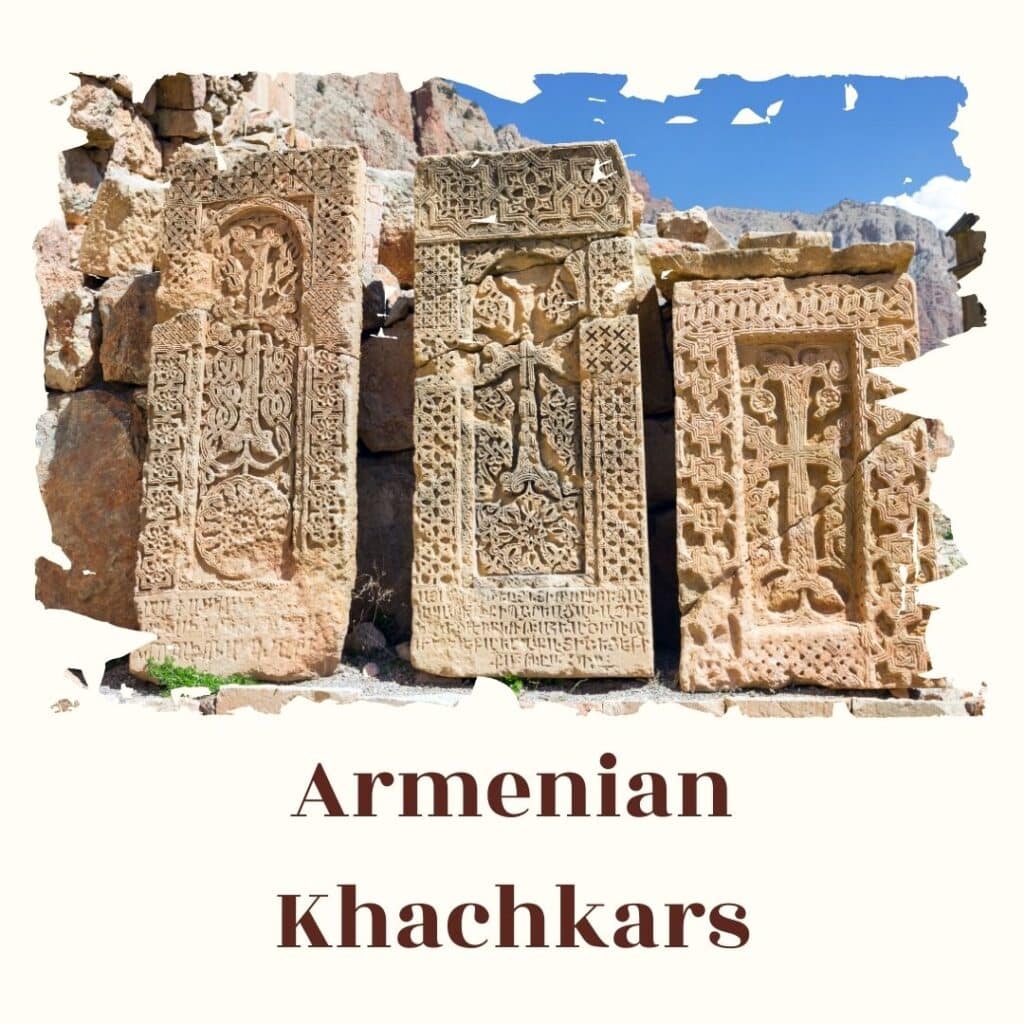
Scattered around Armenia, the cross stones called khachkars are one of the symbols of the country. Tourists can find Armenian khachkars near the churches, monasteries, and cemeteries, or on the streets of Yerevan.
There are around 50,000 cross stones in Armenia, and each is a masterpiece of craftsmanship. The carvings on these stones often depict crosses and geometric patterns, all carefully crafted by skilled artisans.
Beyond their aesthetic beauty, khachkars hold deep spiritual significance for Armenians. They represent a connection to the Christian faith and a tribute to their ancestors. These monuments are timeless. Some pieces found somewhere high in the mountains have endured wars, invasions, and natural disasters. Yet they continue to stand proudly as enduring symbols of Armenian culture.
This blog will uncover the history of Armenian khachkars, their symbolism, and their significance for the Armenian people.
History of Armenian Khachkars
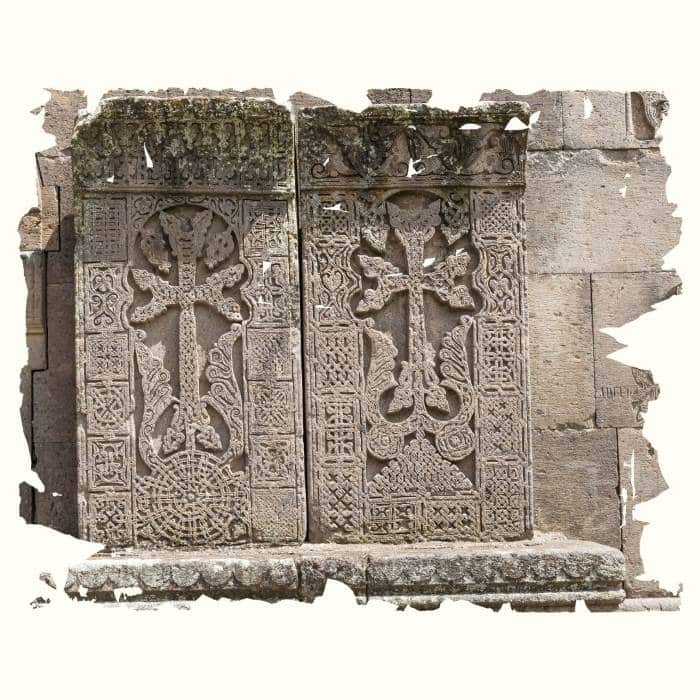
The khachkar, a testament to the original evolution of Armenian culture, stands as a symbol of Armenian identity. The first so-called “winged” crosses and cross compositions emerged in the 4th century. Subsequently, by the transition from the 6th to the 7th centuries, the essential conditions for the development of khachkars had fully taken shape.
The khachkar appeared in the 9th century, gaining significant development in the 12th–13th centuries and enduring until the 18th century.
The 11th century marked the final phase of khachkar development. Its basic structure, style, and carving techniques were formed. Notable examples include the khachkars of Khtskonk in Western Armenia. However, the golden age of khachkars in the 12th–13th centuries witnessed their incorporation into chapel-type buildings, mounting on walls, and the addition of voluminous cornices.
This period saw the integration of sculptural images, intricate borders, and the use of red paint, elevating khachkars to the status of national masterpieces. Distinct schools emerged in regions such as Ani, Lori-Tashir, Aragatsotn-Kotayk, Artsakh, Javakhk, Vayots Dzor, Gegharkunik, and Nakhichevan.
Scattered across the Armenian Highlands, these 1–3 meter high, 0.5 to 1.5 meter wide, and 10–30-centimeter-thick steles can be found everywhere. They are situated near ancient settlements, cemeteries, crossroads, hills, springs, bridges, monasteries, churches, and chapels. In fact, the khachkar serves as a personal and spiritual expression, crafted by believers in response to real-life events such as construction, war, victory, and death. They embody hopes for earthly goals and, most importantly, salvation in the future.
Khachkar Ornaments
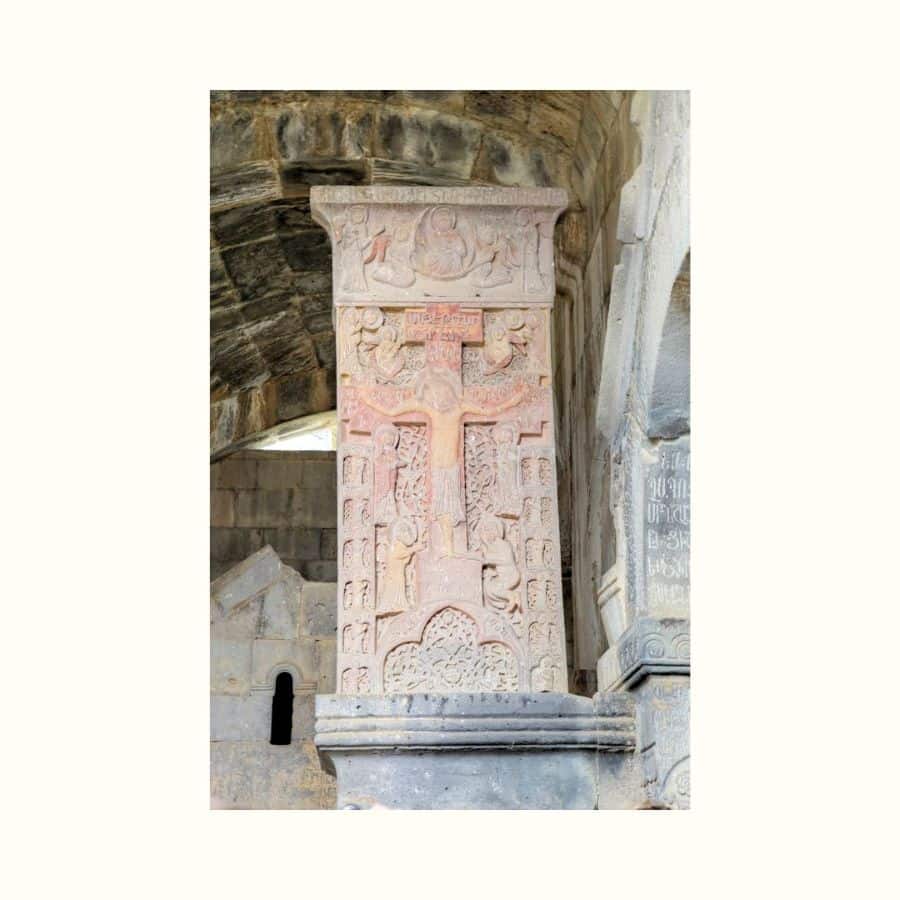
There are many ornaments and symbols on the Armenian cross-stones. Although the shape of the rectangle is the same, each has its own pattern. The material of a cross-stone is local stone – tuff and they are carved with a die, chisel, and other instruments like sharp pens.
Of course, an ornamentally carved stone in the middle is the main symbol. However, there are other typical elements such as the sun, geometric, and plant elements. There are also national symbols like pomegranate or grapes and carvings of saints and animals.
The most distinctive feature of a khachkar is its plant and geometric ornamentation. The illusion of eternity created by the infinity of lines is the main feature that gives visible mystery and power to a cross stone. The cross in the middle is a mediator between the lower and upper parts. The upper part symbolizes heaven, sacredness, and the future. Meanwhile, the lower part is earthly human life, past, and evil.
With the development of khachkar art, the carvings became lighter and resembled several layers of lace. The inscription also became a part of the artistic decoration.
The 13th century introduces unique “All-Savior” (Amenaprkich) khachkars. They depicted the Crucifixion, Descent from the Cross, and Resurrection, deviating from traditional plant ornaments. One of the examples of such khachkars is now present in the Haghpat Monastery in Lori province.
Must-See Khachkars in Armenia
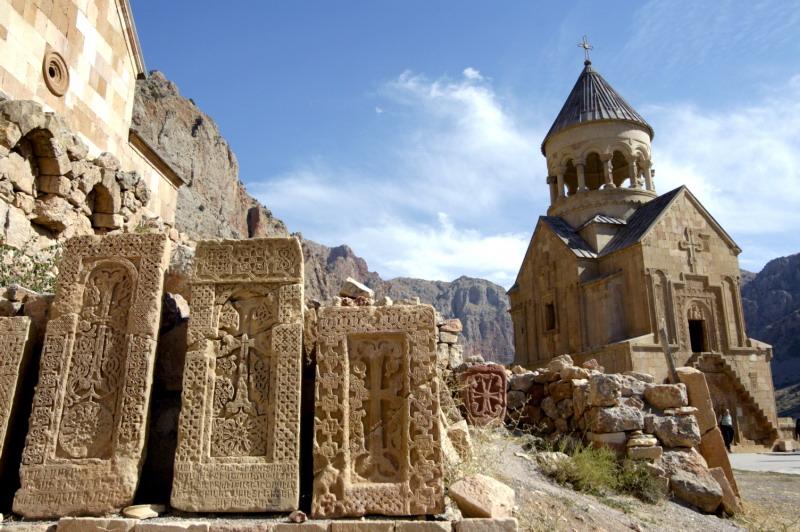
One of the best places to see around 1,000 khachkars is the Noratus cemetery in Armenia’s province of Gegharkunik. It is the largest cemetery of khachkars in the world. The oldest piece here dates back to the late 10th century. The cemetery extends over a seven-hectare field with numerous khachkars with unique ornaments. Some of them feature carvings portraying scenes of rural life or weddings.
Tourists can find some unique khachkars visiting the Monastery of Haghpat, a site featured on UNESCO World Heritage Site list. The best known is the “All Savior” cross stone depicting the Crucifixion that has been standing since 1273. However, there are also other unique cross-stones dating to the 11th-13th centuries. There are also around 50 cross stones in Sanahin Monastery and they are one of the best examples of medieval Armenian sculpture.
In addition, some fine examples of cross-stone art can be found near the Geghard Monastery. One of the best examples of a lacy ornament can be found in Goshavank. For example, “The Needlecarved” khachkar by Pavgos with the master’s name carved on it.
Modern Khachkars
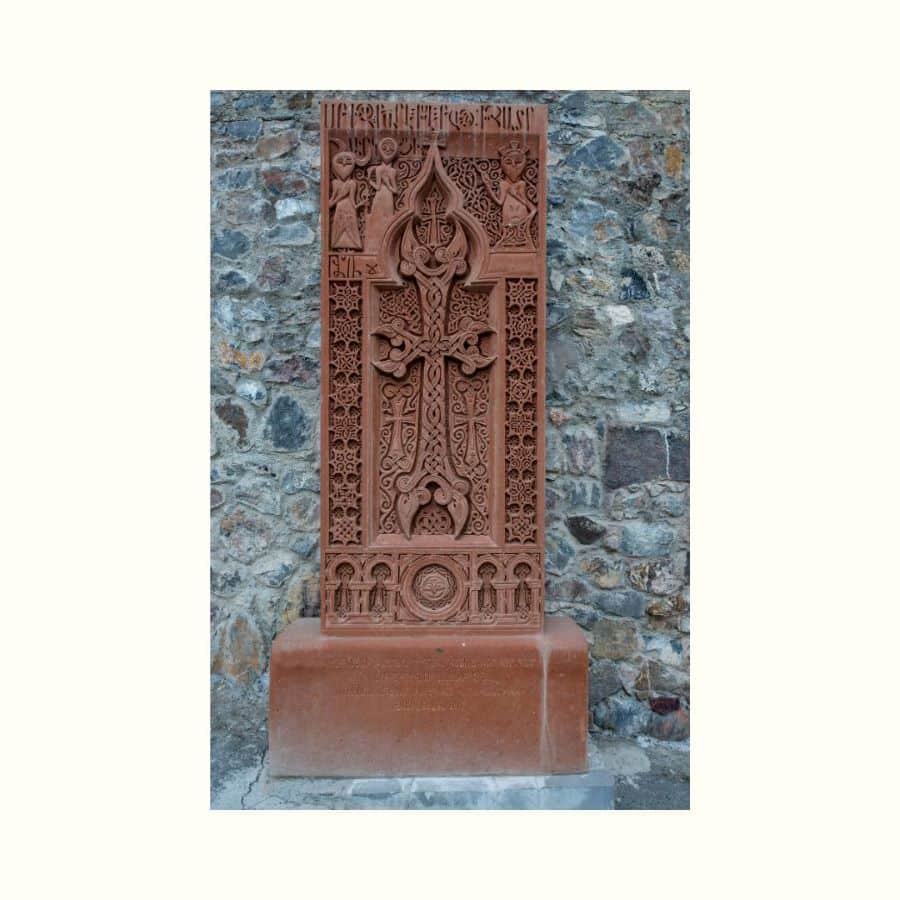
In the 20th century, khachkars experienced a revival, capturing public attention and interest. This breathed new life into ancient khachkars, prompting their revitalization. One notable initiative was the installation of a complex of khachkars in the Mother See of Etchmiadzin.
Numerous khachkars are created in modern Armenia. Some craftsmen successfully revive the classic khachkar composition or replicate specific designs. However, the others deviate from the traditional form and create unique pieces.
When walking in downtown Yerevan, you can see a khachkar studio on Aram Street. It lacks doors allowing passersby to see the process of khachkar carving or to participate in a master class.
Khachkars Outside Armenia
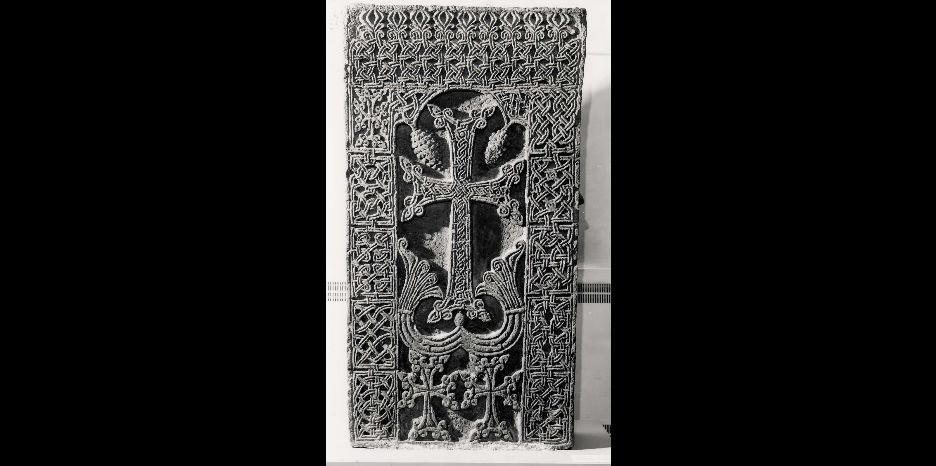
Photo: British Museum
Hundreds of cross-stones stand as memorials around the world. In particular, they honor the victims of the Armenian Genocide. The monuments are in various locations from the Vatican Museum to St Mary’s Cathedral in Sydney.
Some unique cross-stones are part of collections of famous museums. One of them is a 12th-century cross-stone in the Metropolitan Museum of Art. Another khachkar from Noratus cemetery is in the British Museum. It was donated in 1977 by the Catholicos Vazgen I.
